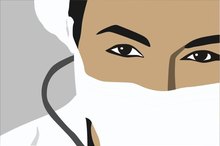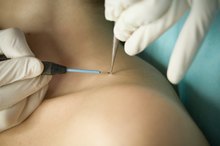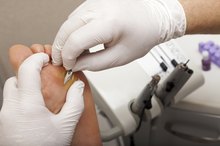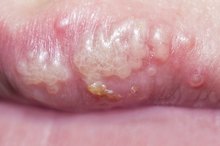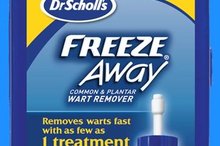How to Remove Anal Warts
Anal warts first appear inside and around the anus in the form of tiny spots or growths, report doctors at the American Society of Colon and Rectal Surgeons 1. Anal warts, also referred to as condyloma acuminata, can start as small as a pinhead and grow to about the size of a pea. While many patients with anal warts feel no discomfort and don't even know they are present, others can experience bleeding, itching and discharge. Anal warts can feel like a mass or lump in the area. Whether they cause pain or not, anal warts should be removed because they can spread the infection throughout the body.
Use a topical medication that contains bichloracetic acid or podophyllin if the warts are small and located on the skin that surrounds the anus. The topical medications are used only for external warts. The ointment is applied directly to the warts to make them slough off. Doctors at Colon & Rectal Surgery Associates report that the procedure is easily performed in a doctor's office in a matter of minutes.
How to Remove Skin Tags With a Wart Remover
Learn More
Get the warts frozen off with liquid nitrogen provided on an outpatient basis in the doctor's office. Other outpatient removal procedures that can remove anal warts include electrocauterization and laser therapy. Researchers at Merck report that most procedures must be performed over a series of treatments to completely eradicate the warts.
Undergo surgery to remove the warts. Doctors at the American Society of Colon and Rectal Surgeons report that internal warts almost always must be removed by surgical means that require anesthesia 1. The procedure usually is performed on an outpatient basis with local or "twilight" anesthesia, followed by pain medication to relieve the discomfort patients typically experience for two or three days afterward.
How Long Does an Outbreak of Genital Warts Last?
Learn More
Follow up with regular checkups because those who have had anal warts removed are at risk for having them return. Anal warts are thought to be caused by the human papilloma virus (HPV), and the virus can stay in the system for a while and cause repeated outbreaks of warts. Follow-up visits may be required for a couple of months to make sure they are completely gone.
Tips
There is no treatment for HPV, but doctors at the Centers for Disease Control and Prevention report that a healthy immune system can fight off the virus. Removal of anal warts can help to deter the spread of the infection in the body.
Warnings
Anal warts are highly contagious, so you should abstain from sexual intercourse while you're being treated. Additionally, HPV is a sexually transmitted disease. Make sure that your sexual partners are checked for anal warts as well so that you do not become reinfected.
Related Articles
References
- Centers for Disease Control and Prevention
- American Society of Colon and Rectal Surgeons. Anal warts.
- Centers for Disease Control and Prevention. Genital HPV infection fact sheet. Updated August 20, 2019.
- World Health Organization. Human papillomavirus (HPV) and cervical cancer. 24 Jan 2019.
- Centers for Disease Control and Prevention. Reasons to get vaccinated. Updated March 26, 2019.
- Centers for Disease Control and Infection. Anogenital warts. Updated June 4, 2015.
- Lopaschuk CC. New approach to managing genital warts. Can Fam Physician. 2013;59:731–736.
- Mistrangelo M, Dal Conte I, Volpatto S, et al. Current treatments for anal condylomata acuminata. Minerva Chir. 2018;73:100-106. doi:10.23736/S0026-4733.17.07554-X
Writer Bio
Linda Ray is an award-winning journalist with more than 20 years reporting experience. She's covered business for newspapers and magazines, including the "Greenville News," "Success Magazine" and "American City Business Journals." Ray holds a journalism degree and teaches writing, career development and an FDIC course called "Money Smart."

